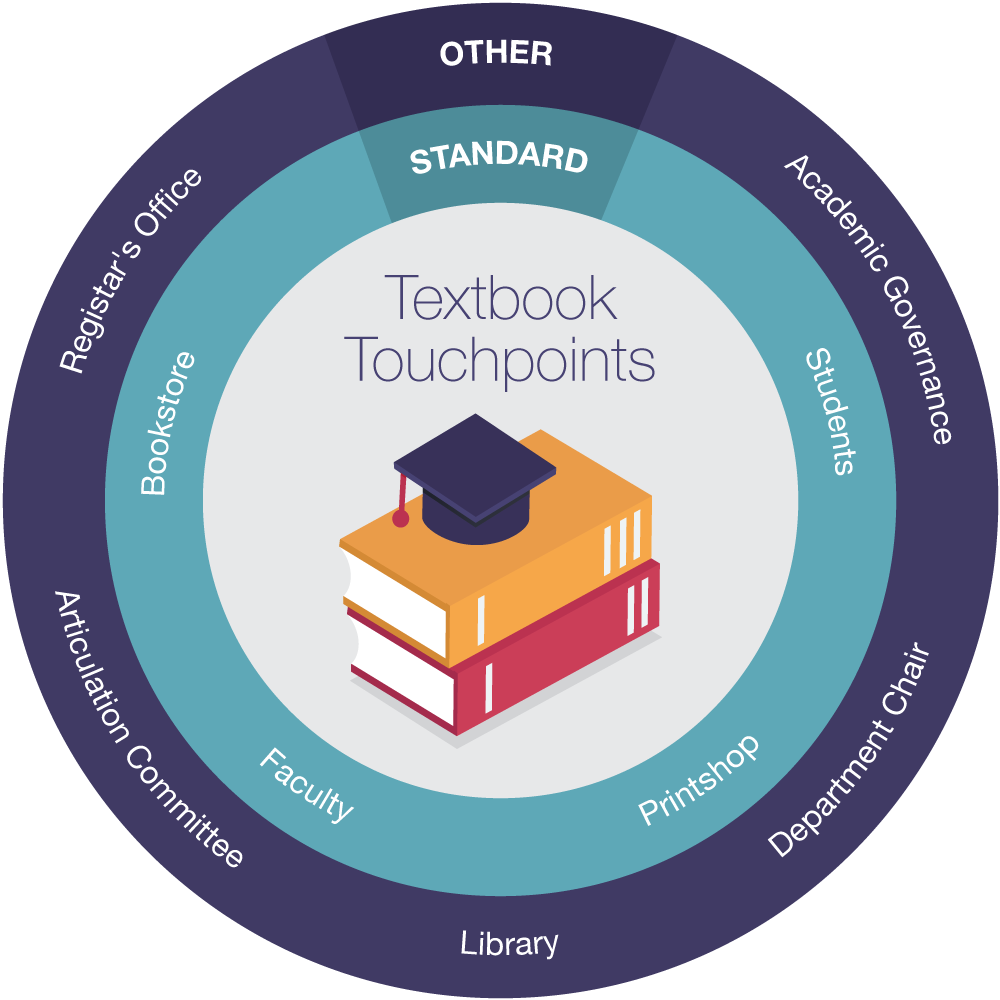PoD on Campus
9 Control and Flexibility
 |
An on-campus PoD service allows control over setup and flexibility to make changes as needed. |
Having control over how a print-on-demand service is constructed — and the flexibility to adjust the process as needed — are two more advantages of printing open textbooks on campus. However, before arranging for an open textbook PoD option, it is wise to consult with departments and individuals that will be involved in the process — the textbook touchpoints — to save time and aggravation later on.

Some of the individuals and groups who use or handle textbooks are listed below.
Faculty: adoption and teaching
The decision about whether or not to use an open textbook in a course often rests with the instructor. At the very least, it is the instructor who must determine how the textbook will be used in the classroom and how it fits within the curriculum. Long term, the instructor might also consider how best and how often to make legally permitted changes to an assigned open textbook.
The convenience of an on-campus service that is willing and able to print open textbooks on demand benefits faculty in several ways:
- Convenience. On-campus services are nearby.
- Familiarity. Instructors are acquainted with their institutions’ bookstores and printshop ordering procedures.
- Special orders. Campus bookstores and printshops are designed to support faculty and students, making it easier for instructors to request printed copies of textbooks, including adaptations.
Printshop: production
The printshop is the expert on the process, materials, and pricing models needed to process orders. They also know what their department can reasonably manage if in-house print-on-demand services are expanded or added.

Bookstore: inventory and sales
An institution’s bookstore and its printshop are often inextricably linked. This relationship provides advantages for students who are assigned an open textbook and also want a printed version. Offering this option, either on demand or as pre-printed copies on the bookstore’s shelves, makes shopping for textbooks easier.

Library: catalogue and course reserve
Post-secondary libraries manage the curation, collection, and cataloguing of resources that support their institutions’ curricula. One way this is done is by ensuring current copies of required materials — including open textbooks — are included in the library’s reserve collection.
Office of the Registrar: course schedule and registration
The registrar’s office is responsible for posting course schedules and administering enrolment services for students. Some registration systems include as part of each course description the required textbook and materials; some take this a step further and mark books that are open and free. Other colleges, institutes, and universities may note that an “open source” or open textbook is available for a course, but do not provide the name of the book.
For post-secondary institutions that offer textbook print-on-demand services, adding information about this option to course registration listings makes for a clearer connection between course sign-up and course material availability and choices.
Students: using and learning
The end user of an open textbook — the student — should be included in a discussion about if and how a book should be made available in printed form. Students are appreciative when their institution makes affordable course materials available. They are also thankful when the process for how this information is shared is clear and easy to find.
Long descriptions
Textbook Touchpoints image description: The standard textbook touchpoints include faculty, students, and the institutional bookstore and printshop. Other textbook touchpoints include the registrar’s office, articulation committees, the library, department chairs, and academic governance. [return to Textbook Touchpoints]
Media Attributions
- Acorn Oak Brown © svklimkin is used under a Pixabay License and is adapted by Lauri Aesoph
- Textbook Touchpoints © BCcampus is licensed under a CC BY (Attribution) license
- Printing Industry © andreas160578 is used under a Pixabay License and is adapted by Lauri Aesoph
- Library Books Education © Foundry Co is used under a Pixabay License and is adapted by Lauri Aesoph

